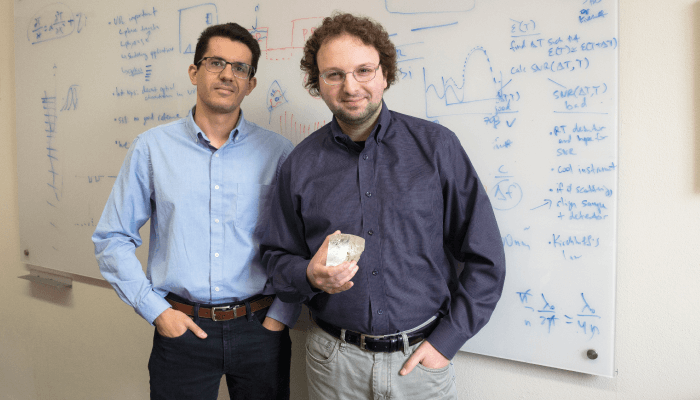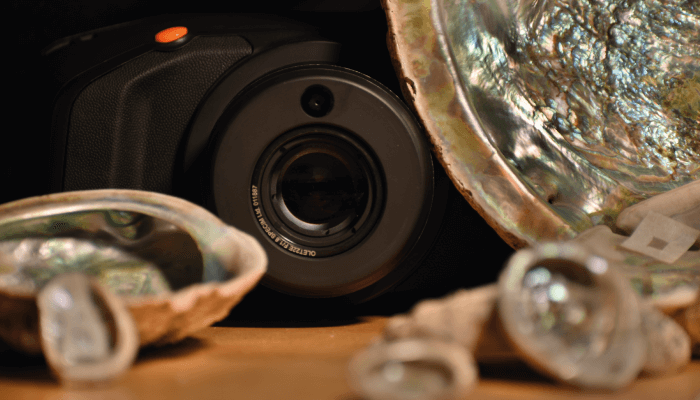
Nacre, or mother of pearl, is one of many natural materials of interest to researchers – not only because of its extraordinary strength, but also because it encodes information about its environment during growth, meaning it could be used as a proxy to study ancient climates.
But studying the structure of this iridescent substance is experimentally challenging. Existing methods result in destruction of the sample and are hard to scale to large sample areas – an important factor in studying nacre, because it is typically not uniform across a given shell.
To overcome this challenge, Pupa Gilbert and Mikhail Kats of the University of Wisconsin-Madison teamed up to see if they could develop an all-optical technique to characterize the structure of nacre. “We figured it would be possible because the unique and beautiful appearance of nacre is a result of thin-film interference,” says Kats. “We posited that the observed interference effects could be inverted to obtain information about the underlying structure.”

The technique they came up with – eventually called hyperspectral interference tomography (HIT) – is based on hyperspectral imaging, in which every pixel on an image contains a full reflectance spectrum ( in this case, in the visible and near-infrared). By taking angle-dependent and polarization-dependent hyperspectral measurements of the shells and mapping the results to a computational model, the team were able to predict the reflectance spectra of possible nacre structures.

“HIT has several major advantages over existing techniques for structural characterization of nacre and other layered biominerals,” says Kats. “One, it is nondestructive, so it can easily be used on precious samples, such as ancient nacre; two, because it does not require any cutting or additional sample preparation, it is very fast, enabling the measurement of many points on the sample and across many samples; and three, it is inexpensive and portable, not requiring electron microscopy or X-ray facilities.”
Though the team made several interesting discoveries during their experiments, the technique’s real value lies in how it could be used in the future. “We believe that HIT of ancient nacre could provide a more comprehensive view of climate history, because nacre encodes the environmental conditions in which it was formed,” says Kats. The technique could also be of value for the characterization of other layered biominerals.
References
- J Salman et al., PNAS, 118 (2021). DOI : 10.1073/pnas.2023623118.




